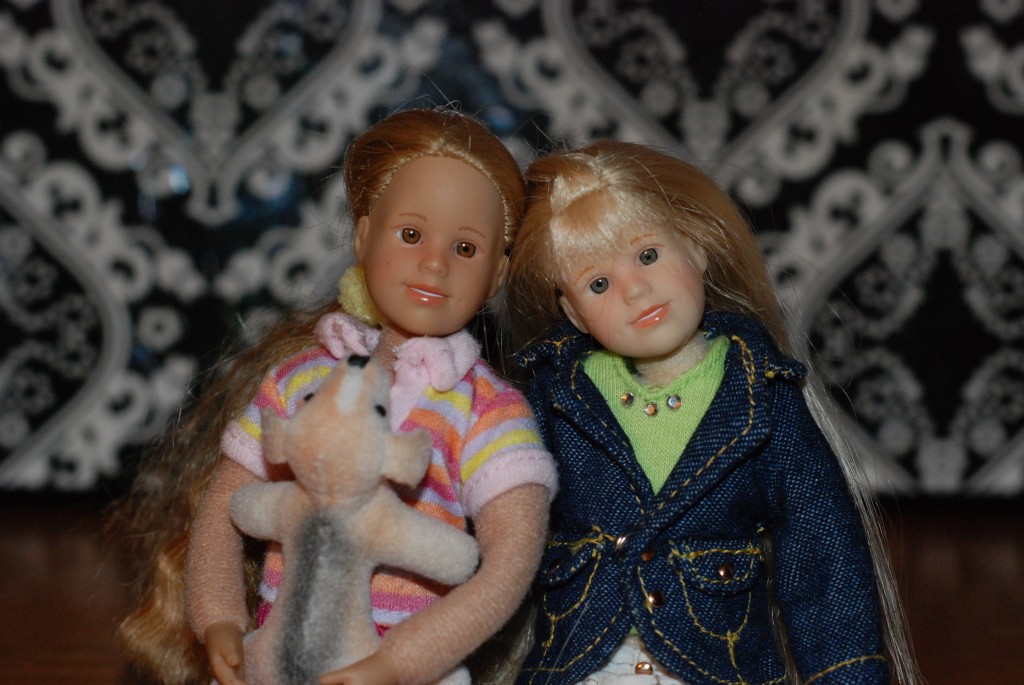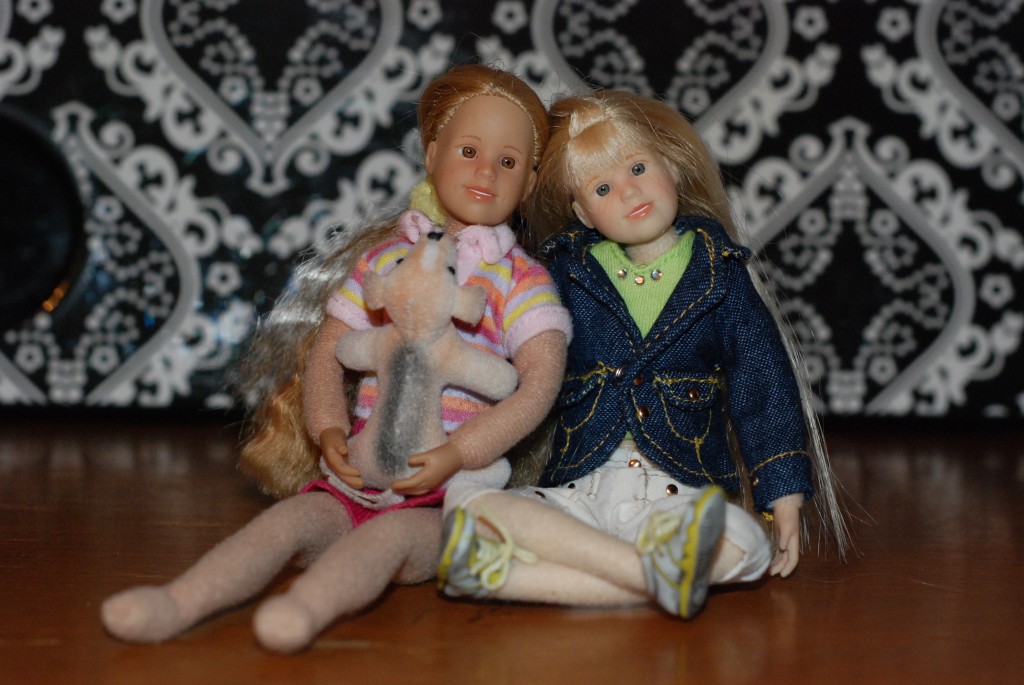“Math is tough.”
Mattel’s talking Barbie
I’m fortunate enough to be writing a monthly column for Our Big Earth, a fabulous local blog that serves our community of young families well. This past Saturday, OBE published my Barbie-Buyer’s Remorse article, and it was met with a wide variety of comments. (To view the article, follow this link: http://www.ourbigearth.com/2010/03/13/buyer’s-remorse-facing-the-barbie-dilemna/comment-page-1/#comment-6761) It got me thinking about Barbie once again, and, at the risk of alienating those of you who have had your fill of ‘doll-talk’, I decided to provide you with an update.
It had been more than a month since I had given our Barbies away, when Pip asked, “Mama, you know who we haven’t seen in awhile? Barbie. Do you know where she is?” (How foolish I was to think that I had gotten away with Barbie-napping and the mysterious disappearance of the high-heeled shoes!) For a brief moment I considered pleading ignorance, but I knew I would have to face the music at some point, so I decided to come clean.
“Pip, I gave your Barbie away because I didn’t think she was a good toy for you to have.” Sugar-coating is not my style.
“But why Mama?” This wasn’t going to be easy, and Pip caught me completely unprepared. How was I going to articulate my feelings in a way that a three-year-old would understand?
“Barbie doesn’t look like a real grown-up woman looks,” I began, finding fault with my reasoning as it was coming out of my mouth. Pip’s ‘Fisher Price Little People’ don’t look like real people, but they are appropriate toys, as are all of the stuffies that fill her toy shelves. Despite my lack of conviction, I forged ahead with something like, “Barbie can’t really do much; she can’t even stand up on her own because of her high-heeled shoes.” Not only was my argument flawed, I clearly should NOT have mentioned the shoes.
“Did you give away my high-heel shoes too, Mama?” Rats.
“Yes, Sweetie, I did, because those shoes were not safe. You kept slipping and falling down whenever you wore them. Your Dad and I decided that they were just too dangerous. You still have your beautiful Ruby Red Slippers, though.”
To be honest, Pip was taking all of this better than I had anticipated. She wasn’t crying. She didn’t even seem terribly upset or surprised. There was definitely a lot going on in her little mind, but she was quite calm as she processed the information I was giving her. (I like to think that she appreciated my honesty.)
If I remember correctly, she did toss out the occasional whine: “But I liked Barbie,” and, “I bought them with my own money!” In the end, she actually gave me a hug and said, “Mama, even though you gave away my Barbie and my high-heel shoes, I still love you.”
“Thanks Pip,” I said. I was genuinely relieved. Our talk had gone a lot better than I had imagined, and it had nothing to do with me.
Now, I realize that many of you disagree with my concerns about Barbie, but I did a little research this time around, and I found a study called, ‘Does Barbie Make Girls Want to Be Thin? The Effect of Experimental Exposure to Images of Dolls on the Body Image of 5-8 Year Olds.’ Author Suzan Ive states, “dolls provide a tangible image of the body that can be internalized as part of the child’s developing self-concept and body image.”
It was found that girls’ desire for thinness emerges around age 6 and that dolls like Barbie, because of their iconic status, are likely to act as salient role models, at least for very young girls. Ives states in the Discussion and Conclusion section of her research, “[Findings] showed that very young girls experience heightened body dissatisfaction after exposure to Barbie doll images but not after exposure to Emme doll (or control) images.” In other psychological studies in the past, it has similarly been found that children who play violent video games are later proven to be more aggressive, even though they are merely playing a “game” and not reenacting reality.
I played with Barbies as a young girl. I had the Malibu Barbie Camper, a wonderful wardrobe for my dolls, and of course lots of accessories. I loved my Barbies, but I would have had just as much fun with dolls that represented a more realistic body shape. It has been said that, if Barbie were a real human being, she would be seven feet tall, have an 18” waist and weight 110 lbs!!!
It’s hard to know how much of an impact those dolls had on my own body image, but I definitely went through a stage of unhealthy eating in order to maintain an unrealistic weight. I was pursuing an acting career at the time, and at 5’10” and 120 lbs, I had an agent who told me that I could stand to lose some weight! The sad thing is, I didn’t laugh in his face, I ate melba toast instead.
I don’t want to rob my daughters of the fun I had dressing-up and playing with dolls, but I want to be wise in selecting their toys. That’s why I was delighted to discover the ‘Only Hearts Club Dolls.’

They’re available at our local toy store, Whales Tales. I like them because their bodies remind me of my five-year-old niece: no boobs, no waist, no make-up…and they wear SNEAKERS!!! The dolls still have long hair to play with, and there are an array of clothes and accessories, but I think they’re a great compromise. Best of all, none of the dolls say, “Math is tough.” (What on earth was Mattel thinking?)

Only Hearts Club Dolls – It’s about time they came up with an alternative to Barbie. I enjoyed reading about the studies. A century ago women were sculpted, painted and depicted in a much different way physically. But then, perhaps women who were thinner craved to be curvaceous in just the right places and voluptuous with just the right amount of weight on them. Hmmmm! Time to have men scrutinized….. Oh right, women are more interested in mens’ character….
I’m so very thankful for the Only Hearts Club dolls. Barbie isn’t allowed at our house except for viking funeral reenactments. The kids even had the idea to create their own website for them. As a homeschooling mom, that’s a much better result from playing with these dolls than people had with Mattel’s “math is hard” message.